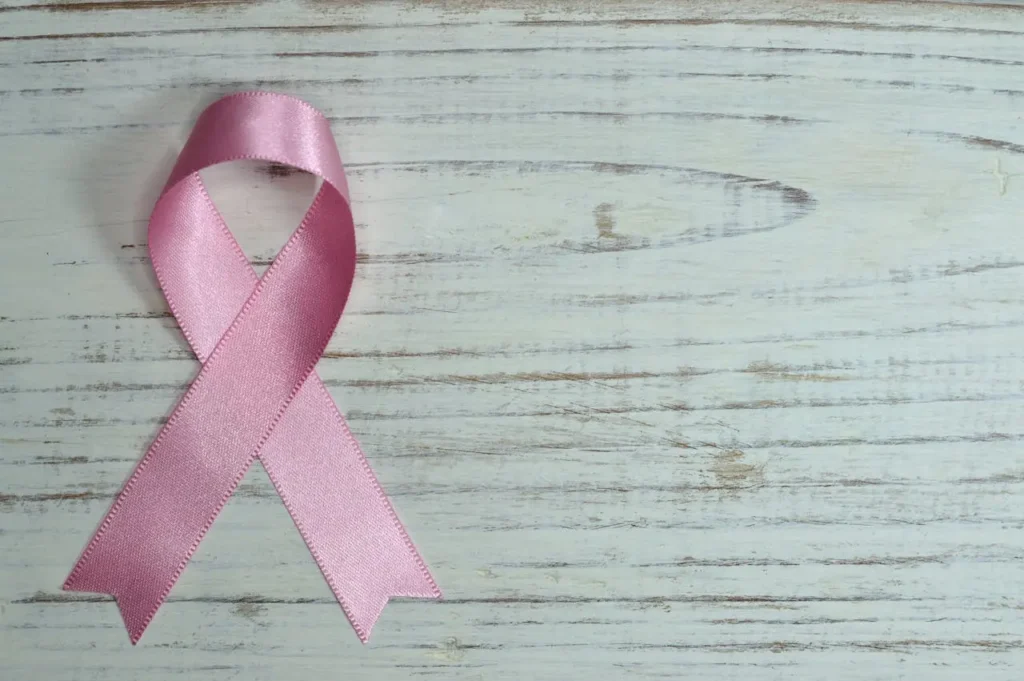
Breast cancer is one of the most prevalent cancers affecting women globally, but increased awareness and advancements in treatment have significantly improved outcomes. This blog will Breast cancer awareness provide an in-depth understanding of breast cancer, including its signs, risk factors, diagnosis, treatment options, and promising research like breast cancer vaccines. We will also explore the role of breast cancer genetic testing, developments in triple-negative breast cancer insulin signalling, and the latest treatments aimed at enhancing survival rates even in the last stage of breast cancer.
1. What is Breast Cancer?
Breast cancer develops when abnormal cells in the breast tissue multiply uncontrollably, forming tumors that may spread to other parts of the body. Understanding breast cancer and its various stages is critical for timely diagnosis and treatment.
Types of Breast Cancer
- Ductal Carcinoma In Situ (DCIS): A non-invasive, early-stage breast cancer limited to the milk ducts. This is considered pre-breast stage 0, where the cancer cells haven’t spread outside the ducts, making early treatment highly effective.
- Invasive Ductal Carcinoma (IDC): The most common type of breast cancer, IDC starts in the ducts but invades nearby tissues.
- Invasive Lobular Carcinoma (ILC): Begins in the milk-producing lobules and spreads to surrounding tissue.
Breast cancer is a global health issue, and understanding its types and stages can significantly affect treatment outcomes. The risk increases for aggressive types such as triple-negative breast cancer, which requires specialized treatment and research focused on triple-negative breast cancer insulin signalling.
2. Recognizing the Signs and Symptoms of Breast Cancer
Early detection of breast cancer dramatically improves the chances of successful treatment. Some common signs and symptoms include:
- A lump or thickened tissue in the breast or underarm.
- Changes in breast size, shape, or appearance.
- Unusual nipple discharge or inversion.
- Skin changes, such as dimpling or redness on the breast.
- Persistent breast or nipple pain (though not always cancer-related).
Breast self-exams and routine screenings like mammograms are essential for detecting changes early. Women should perform monthly self-exams and consult healthcare providers for regular screening based on their risk profile.
3. Breast Cancer Risk Factors
Understanding the risk factors of breast cancer helps in prevention and early detection. Some risk factors are genetic, while others are related to lifestyle choices.
Non-Modifiable Risk Factors
- Age: The risk of breast cancer increases with age.
- Genetics: Women with inherited mutations in BRCA1/BRCA2 genes are at significantly higher risk. Breast cancer genetic testing can help identify these mutations early, allowing women to make informed decisions about preventive measures.
- Family History: A family history of breast cancer, especially in close relatives, increases the likelihood of developing the disease.
- Gender: While breast cancer primarily affects women, men can also develop it.
Modifiable Risk Factors
- Lifestyle Choices: Smoking, alcohol consumption, and a sedentary lifestyle increase breast cancer risk.
- Weight Gain: Weight gain increases the risk, particularly after menopause, due to higher estrogen levels stored in fat tissue.
Emerging Risk Factors
Environmental factors and night shift work are being studied as potential contributors to breast cancer risk. Though further research is needed, these are important to consider.
4. Risk Reduction and Prevention Strategies
Adopting a healthy lifestyle and undergoing regular screenings can help reduce breast cancer risk. Here’s how you can take preventive measures:
Healthy Lifestyle Choices
- Balanced Diet: A diet rich in fruits, vegetables, and whole grains reduces cancer risk. Some studies suggest that antioxidants like glutathione may impact cancer cell growth. Ongoing research into the relationship between glutathione and breast cancer cells could provide further insights.
- Physical Activity: Regular exercise helps maintain a healthy weight, which lowers the risk of breast cancer.
- Limit Alcohol and Avoid Smoking: Both smoking and heavy alcohol consumption are linked to an increased risk of breast cancer.
Regular Screenings
- Mammograms and Breast MRI: Regular mammograms are recommended, especially for women over 40. High-risk women, including those with BRCA1/BRCA2 gene mutations, may benefit from additional screening options like breast MRI.
- Breast Cancer Genetic Testing: Women with a family history of breast cancer should consider genetic testing. Identifying mutations early can prompt preventive measures such as prophylactic mastectomies or medications like tamoxifen.
5. Breast Cancer Diagnosis
Accurate diagnosis is critical to successful treatment. A combination of physical exams, imaging tests, and biopsies are used to confirm breast cancer and determine its stage.
Diagnostic Procedures
- Imaging Tests: Mammograms, ultrasounds, and MRIs are used to detect abnormalities in the breast tissue.
- Biopsies: A biopsy involves extracting tissue samples from the breast for laboratory testing to determine if cancer cells are present.
- Genetic Testing: For those with a family history or a high risk of breast cancer, genetic testing can provide crucial information about the likelihood of developing the disease.
Staging Breast Cancer
Staging ranges from pre-breast cancer stage 0 (DCIS) to the last stage of breast cancer (Stage IV), where cancer has metastasized to other parts of the body. Knowing the stage helps determine treatment options and provides a prognosis for survival.
6. Breast Cancer Pre-Surgery Preparation and Treatment Options

Once breast cancer is diagnosed, a combination of treatments may be recommended based on the stage and type of cancer. Breast cancer pre-surgery preparation involves various diagnostic tests, consultations, and sometimes medications to shrink the tumor before surgery.
Surgical Options
- Lumpectomy: The removal of the tumor while preserving most of the breast tissue.
- Mastectomy: The complete removal of one or both breasts, often recommended for advanced stages or high-risk patients.
Radiation Therapy
Radiation therapy uses high-energy rays to destroy cancer cells and is commonly administered after surgery to prevent recurrence.
Chemotherapy
Chemotherapy involves using powerful drugs to kill cancer cells. It can be administered before surgery to shrink tumors or after surgery to reduce the risk of recurrence.
Hormonal Therapy
For hormone receptor-positive cancers, hormonal therapies block estrogen and progesterone, preventing cancer cells from growing.
Targeted Therapy
Targeted drugs focus on specific proteins or genes involved in cancer development. HER2-positive breast cancer, for example, is treated with targeted therapies like trastuzumab.
Immunotherapy
Immunotherapy is a promising treatment for aggressive cancers like triple-negative breast cancer. Research on triple-negative breast cancer src signalling and insulin signalling is helping to develop more effective therapies.
Breast Cancer Vaccine
Exciting advancements are being made in the development of a breast cancer vaccine. While still in clinical trials, these vaccines could offer preventive measures for women at high risk and reduce the chances of recurrence in survivors.
7. Hope for a Cure: Latest Advances in Breast Cancer Research
Significant progress is being made in breast cancer research, offering hope for improved survival rates and potential cures.
Innovations in Treatment
Researchers are exploring new drugs, therapies, and techniques to treat breast cancer more effectively. Triple-negative breast cancer awareness src signalling and insulin signalling are being studied to develop better-targeted treatments for this aggressive form of cancer.
Immunotherapy and Personalized Medicine
Immunotherapy and personalized medicine have shown great promise in fighting breast cancer. Tailoring treatment to an individual’s genetic makeup improves outcomes and reduces side effects.
Early Detection Technology
Innovative technologies, such as liquid biopsies and enhanced imaging techniques, are being developed to detect cancer earlier. These advancements will improve the accuracy of diagnoses and provide more effective treatment options.
8. Emotional and Psychological Support for Breast Cancer Patients
Breast cancer awareness takes an emotional toll on patients and their families. Fighting breast cancer for women goes beyond physical health; mental and emotional well-being are crucial.
Support Systems
Therapy, counselling, and support groups play a vital role in helping patients cope with the emotional challenges of a breast cancer diagnosis and treatment.
Support from Family and Friends
Family members and friends provide essential emotional and practical support, helping patients navigate treatment and recovery.
9. The Role of Breast Cancer Awareness and Advocacy
Breast cancer awareness campaigns have improved early detection rates and supported ongoing research. Organizations like Susan G. Komen and the Breast Cancer Research Foundation continue to lead the way in advocacy, education, and research funding.
How You Can Help
- Participate in awareness events.
- Donate to research initiatives.
- Support loved ones who are battling breast cancer.
Conclusion
Breast cancer remains a significant challenge, but with advancements in early detection, genetic testing, and treatment, survival rates continue to improve. Women fighting breast cancer today have more tools than ever before, from preventive measures like breast cancer genetic testing to new treatment options such as immunotherapy and breast cancer vaccines.
Staying proactive with regular screenings, maintaining a healthy lifestyle, and supporting breast cancer research are crucial steps toward a future where breast cancer is preventable and curable.


